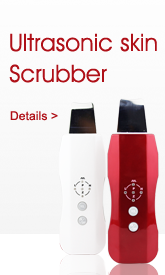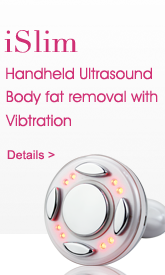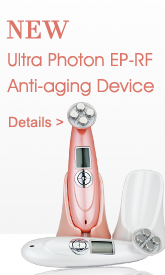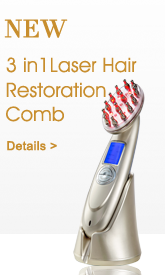Micro-Botox treatment is a non-invasive cosmetic treatment that uses the same exact formulation as regular Botox, meaning that it relies on the neurotoxin botulinum toxin in order to limit nerve signals to the muscles within a treatment area.
With all of the modern innovations in non-invasive injectable treatments, people now have a myriad of different ways to rejuvenate the skin. Fine lines and dynamic wrinkles can be treated with dermal fillers, like Juvederm and Restylane, as well as neuromodulators, such as Dysport and Botox.
Conventional Botox injections have been a go-to for patients for over a decade. Botox reduces the appearance of dynamic wrinkles by essentially “freezing” the nerve signals to muscles in the treatment area, which in turn relaxes the facial muscles. Traditional Botox is an excellent option for patients seeking to reduce the appearance of fine lines and wrinkles, and also has some additional treatment uses, such as shrinking sweat glands and sebaceous glands to control excessive sweat and oil production, respectively.
However, Botox has developed a reputation for limiting muscle movement to the point that facial expressions can appear stuck or frozen due to inexperienced injectors that use the same Botox treatment for every patient. This is why the Botox injection technique has been curated to include a variety of different styles, including micro-Botox treatment. Micro-Botox, also known as baby Botox, intradermal Botox, or meso-Botox, uses small dose micro-injections of Botox in order tailor subtle and natural results that do not limit facial movement. It’s an excellent method to rejuvenate the skin and is particularly popular amongst younger patients hoping to prevent wrinkles from forming.
What is Micro-Botox Treatment?
Micro-Botox treatment is a non-invasive cosmetic treatment that uses the same exact formulation as regular Botox, meaning that it relies on the neurotoxin botulinum toxin in order to limit nerve signals to the muscles within a treatment area. This in turn encourages those muscles to relax, thus reducing or preventing the development of dynamic wrinkles. The primary difference is that the FDA-approved, traditional Botox is diluted and injected via microdroplets into the superficial level of the dermis.
This diluted Botox is a wonderful method to treat more delicate facial muscles, such as crow’s feet, as well as to balance out minor asymmetries. It’s also popular for patients who have fine lines and wrinkles in sensitive areas such as the neck and jawline. It’s an innovative method for treating patients with mild to moderate fine lines and wrinkles, as well as for younger patients seeking preventative wrinkle treatment. Additionally, micro-Botox treatment is an effective method for reducing pore size, sweat gland size, and sebaceous gland size. In some cases, continued micro-Botox treatment can cause a sweat gland to atrophy, which prevents sweat production from the gland entirely. This means that micro-Botox may be a useful treatment for patients who are suffering from excess sweat, oil production, or even active acne breakouts.
How long does Micro-Botox last?
Micro-Botox, like traditional Botox, lasts on average 3-4 months. However, when micro-Botox is combined with other cosmetic treatments, such as hyaluronic acid dermal fillers, results can be extended by several months.
Does Botox help Rosacea?
In recent years, the dermatology world has recognized that Botox can be used for a variety of helpful skin issues, including that of Rosacea. For those who suffer from flushing rosacea and are frustrated by the appearance of redness and tenderness on the surface of the skin, micro-Botox may be a useful, long-lasting treatment option. The current study suggests that the neurotoxin within Botox, botulinum toxin, can interfere with the blood vessels’ ability to dilate, thus reducing the redness that many rosacea patients face
Can you microneedle with Botox?
Micro-Botox can be administered via diluted injections of traditional Botox, which relies on conventional injection methods, where a topical numbing cream is applied to prevent any potential discomfort. Micro-Botox can also be applied via the process of micro-needling. Microneedling uses tiny, “thinner-than-a-strand-of-hair” needles in order to engage the wound healing properties of the skin, stimulating collagen production within the layers of the dermis. Microneedling also creates micro-channels into the dermis that can increase the absorption of revitalizing serums and nutrients, as well as micro-doses of cosmetic injectables like Botox and various dermal fillers.
What is a “Botox Facial”?
A “Botox Facial” is often defined as the administering of micro-Botox treatment via a micro needling device. Through the use of micro needling, Botox can be applied via micro-channels within the dermis, creating subtle and incredibly natural facial rejuvenation. Like micro-Botox injections, a “Botox Facial” requires no downtime and often is considered to be an instant facelift for patients seeking artful facial revitalization.
Can you get micro-needling after Botox?
If you’re wondering, can you microneedle after Botox, it’s important to consider timing. Due to the nature of Botox’s formulation, it’s recommended that patients wait at least two weeks after Botox treatment before engaging with any further micro-needling treatments. However, micro-needling as a means to deliver micro-Botox, like the “Botox Facial”, is an incredibly effective and safe way to deliver facial rejuvenation.
At last, here are some of the products you may need for micro-botox.
Click the link below to get more details:


















